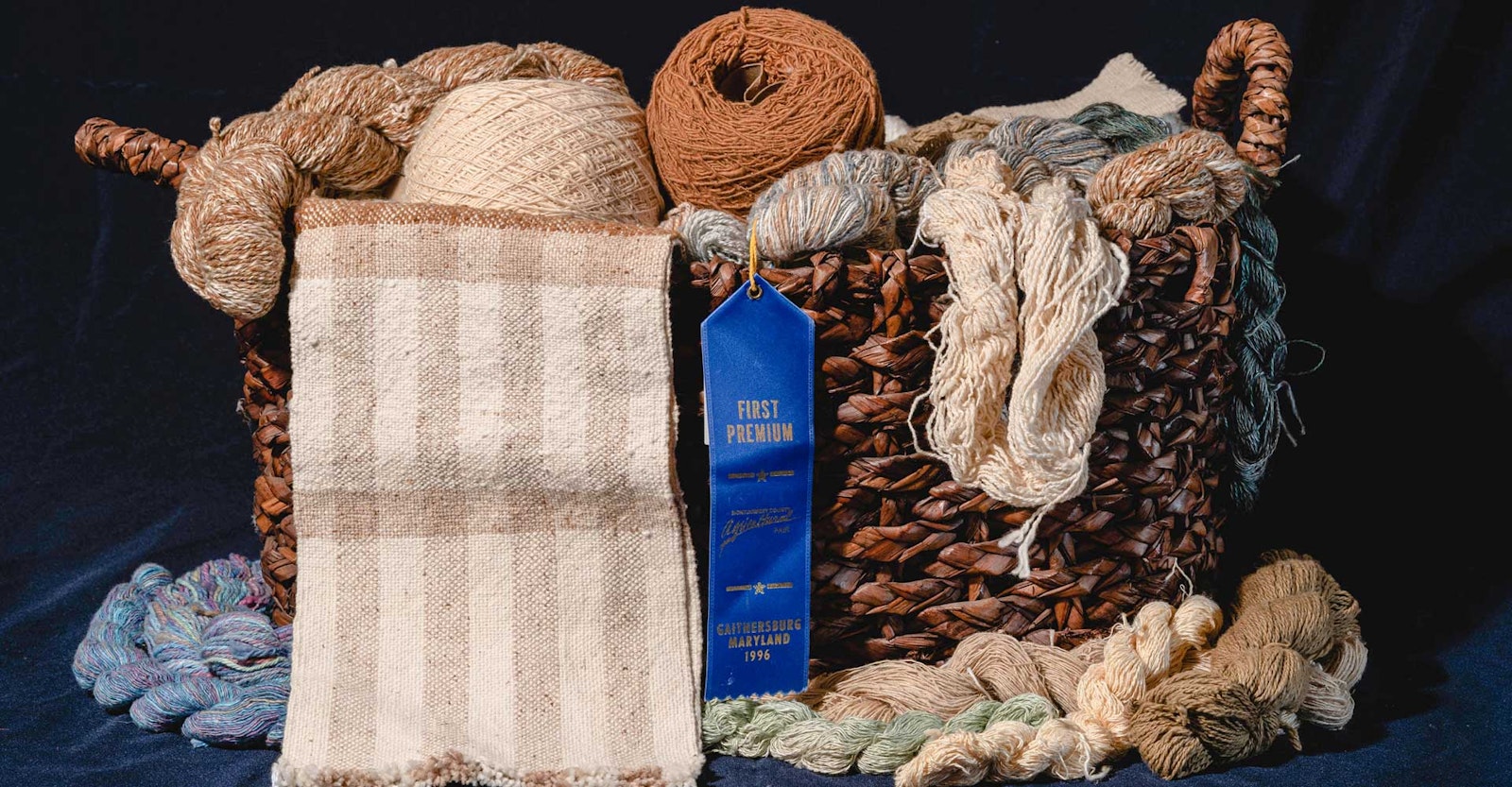I lost the bid on the yarn I wanted. I had gone higher than I’d planned but still lost.
The next item up at the guild’s auction was a large clear plastic bag full of yarn and bits of roving. The contents were beautiful. Even from a distance, the colors mingled perfectly together—subtle browns and greens, pale creams and beige. The colors caught me; the entire bag seemed curated into a subdued palette. I bid with hardly any competition and went home with the heavy bag.
At home, I began sorting through the contents of the bag. Everything was beautifully handspun. This bag of fiber explorations was created by a spinner who could spin anything, I thought. I speculated that she must have been a teacher to be so careful and systematic. I caught myself assuming “she.”
Skeins were carefully plied and labeled with fiber type and often the brand of spinning wheel. One set of skeins was numbered sequentially. Fine singles were wrapped around cardboard tubes and ready to be plied. A plastic bag held the purest white skein, small and soft, labeled “Walmart Cotton Balls,” and a few white cotton balls were thrown in as proof.
Woven samples showed how the yarns performed in cloth. All were plain weave and perfectly woven. One long runner included a dozen different beautifully woven wefts, a sampler to highlight the handspun yarns.
I had noticed a skein with a blue ribbon attached, and I went back to read the label, which was written in cursive. “Cotton Novelty. Spun from roving of organic white, organic brown and shredded blue jeans—long draw. Jane Hyland. Kensington.” I stopped. Jane had taught me to spin more than 20 years ago. I held the blue-ribbon skein, remembering the class and remembering her.
When I learned to weave from a book, I found it relatively simple to start. It was so systematic; if you followed the steps, you got cloth. It wasn’t fine cloth for a long time, but the process yielded cloth. Spinning was different. When I got my spinning wheel, no amount of reading resulted in yarn. I thought there was something wrong with the wheel, or there was something wrong with me.
So, I signed up for a half-day spinning class with Jane. I remember her so clearly saying, “Anyone can learn to spin.” Slowly, one step at a time, first the movement of feet on the treadle, then the drawing motion with just the fingers, then slowly together. Hands held at the waist, slowly, gently, and suddenly it felt like riding a bicycle. I fell into spinning.
That same afternoon when I learned to spin, I was struck by the value of a teacher. I suddenly saw the intergenerational bond, passed from one woman to another, like mitochondrial DNA. How many skills have passed from one generation to the next, improved, and passed again? And how many skills have been lost to disrupted culture or early death?
Jane passed away about 10 years after I learned to spin, after she taught me that anyone can spin. Her bag of carefully spun, carefully sorted, meticulously labeled yarn with the woven samples was a gift, a grace that reminded me of the value of teachers, of the beauty of handcraft, of the lineage we all participate in, and of the understanding that we can do what we intend to do even if it requires help.
In memory of Jane Hyland, a member of the Weavers Guild of Greater Baltimore. Each year at the Maryland Sheep and Wool Festival, awards are given in her memory to the best handspun skein, the best handspun article, and the best spinning team in the Sheep-to-Shawl Contest.
Anne Elixhauser worked as a health services research scientist for more than 30 years. Since retiring, she has helped get a first-time candidate elected to the Maryland state senate, has been weaving and knitting (much of it with handspun yarn), and is currently sewing face masks while staying home with her husband, her high-school–aged son, and her dog.
A version of this article originally appeared in the monthly newsletter of the Weavers Guild of Greater Baltimore and in the Summer 2020 issue of Spin Off.

